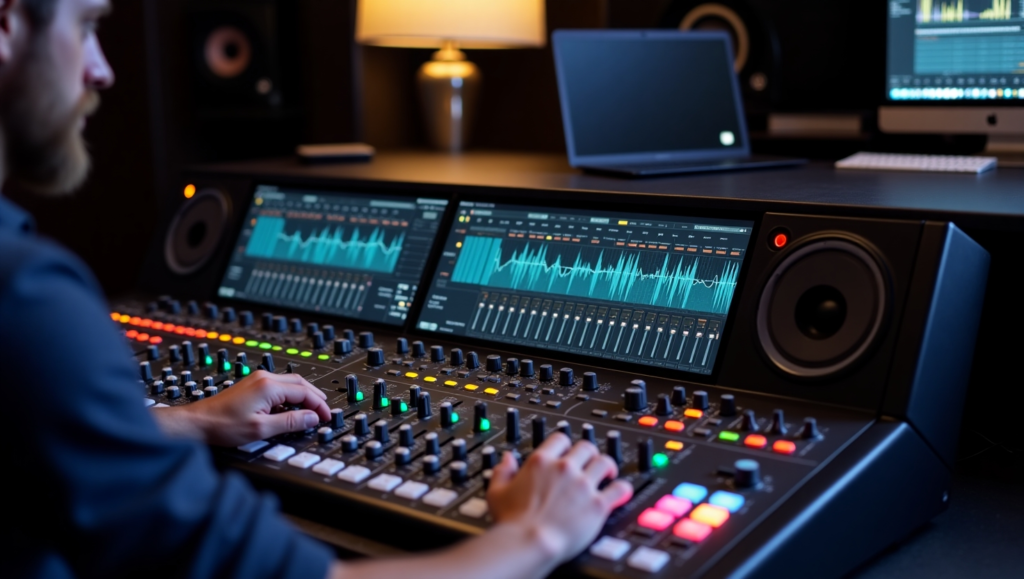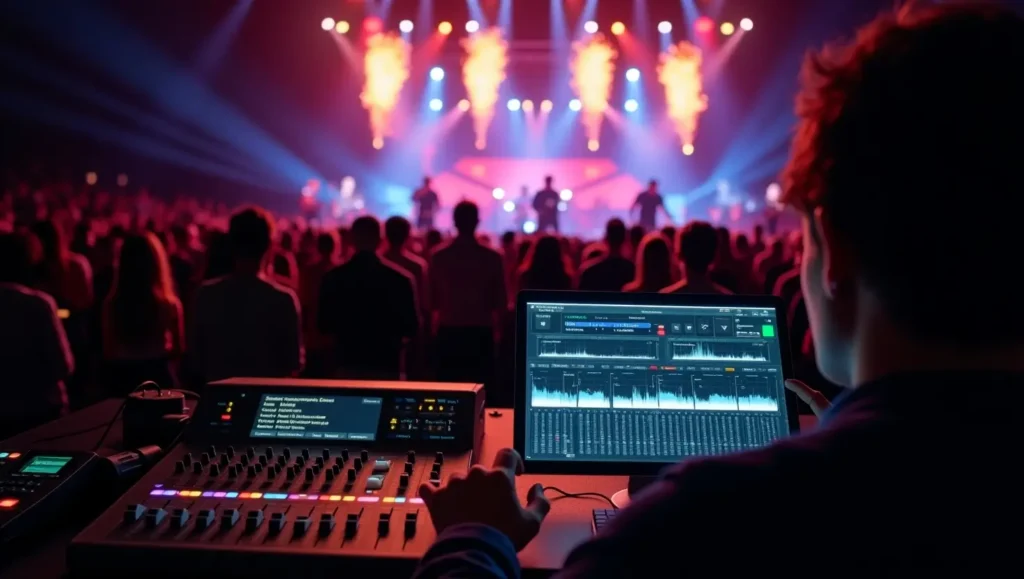Introduction
Welcome to denzidesign.com. In today’s fast-paced world of music production, live sound engineering, and broadcasting, achieving high-quality audio is more important than ever. Whether you’re a musician, a studio engineer, or an event professional, a digital mixer is a game-changer in the way sound is processed and controlled. Unlike traditional analog mixers, digital mixers provide advanced features like built-in effects, automation, and remote control capabilities, making them an essential tool for modern audio applications.
A digital mixer converts analog audio signals into digital data, processes them with precision using Digital Signal Processing (DSP), and outputs clear, high-quality sound. This technology allows for superior flexibility, improved sound customization, and seamless integration with digital audio workstations (DAWs). From studio recording and live performances to streaming and broadcasting, digital mixers have revolutionized the way audio is managed.
In this guide, we’ll explore what a digital mixer is, how it works, its benefits, and why it’s a must-have for anyone looking to elevate their audio experience. Whether you’re a beginner or seasoned professional, understanding digital mixers will help you make the right choice for your needs
What Is a Digital Mixer?
A digital mixer is an electronic device that processes and manipulates multiple audio signals in a digital format. Unlike analog mixers, which rely on physical circuitry to manage sound, digital mixers use software and Digital Signal Processing (DSP) to enhance flexibility, precision, and efficiency.
Key Features of a Digital Mixer:
- Digital Signal Processing (DSP): Applies effects such as equalization (EQ), compression, and reverb.
- Multiple Inputs and Outputs: Supports various audio sources, including microphones, instruments, and playback devices.
- Automation and Presets: Allows saving and recalling custom settings for different performances or recordings.
- Remote Control: Can be operated via apps or software on tablets and computers.
- Connectivity Options: Includes USB, Ethernet, and MIDI for seamless integration with digital audio workstations (DAWs).

How Does a Digital Mixer Work?
A digital mixer converts analog audio signals into digital data, processes them using onboard DSP, and then outputs the modified signals. The process involves:
- Signal Input: Audio signals from microphones or instruments enter the mixer.
- Analog-to-Digital Conversion (ADC): The analog sound waves are converted into digital data.
- Processing & Effects Application: The digital signals are manipulated using equalizers, compressors, and other built-in tools.
- Digital-to-Analog Conversion (DAC): Processed signals are converted back into analog for speakers or recording devices.
- Output to Speakers/Recording Devices: The final mixed sound is sent to speakers or recorded for production.
What Is a Mixer, and What Is It Used For?
A mixer, whether digital or analog, is used to combine, process, and route multiple audio sources into a cohesive output. It is essential for:
- Live Sound Engineering: Ensuring balanced sound at concerts and events.
- Studio recording: creating high-quality music, podcasts, and broadcasts.
- Streaming & Broadcasting: Managing multiple audio feeds for online content.
- Theater & House of Worship: Providing seamless audio control in performances and sermons.

Why Do We Need an Audio Mixer?
An audio mixer is crucial for anyone dealing with multiple sound sources. Without one, balancing levels, applying effects, and ensuring a clear mix would be nearly impossible. It allows users to:
- Adjust volume levels for each sound source.
- Enhance audio quality with built-in processing tools.
- Create customized soundscapes for different environments.
What Are the Benefits of a Digital Mixer?
Switching to a digital mixer offers several advantages over analog counterparts:
1. Superior Sound Quality
Digital mixers offer higher dynamic range and lower noise interference, ensuring clearer audio.
2. Advanced Features & Flexibility
With built-in EQs, compressors, and reverb effects, digital mixers eliminate the need for external gear.
3. Recall & Automation
Save presets and automate settings for different performances, making transitions smoother and reducing setup time.
4. Compact & Lightweight
Digital mixers replace bulky analog consoles with compact, space-efficient designs.
5. Remote Control Capability
Operate from anywhere via wireless apps, making live sound adjustments more convenient.
Choosing the Right Digital Mixer
When selecting a digital mixer, consider the following factors:
- Number of input channels: Match your needs based on how many instruments or microphones you use.
- Built-in Effects & Processing: Look for onboard EQ, reverb, and compression.
- Connectivity Options: Ensure compatibility with USB, MIDI, and DAW software.
- User Interface & Control: Touchscreen interfaces and app control enhance usability.
Conclusion
A digital mixer is a powerful tool for musicians, audio engineers, and content creators looking to achieve professional sound quality. With advanced features, flexibility, and remote control capabilities, it offers a superior audio mixing experience compared to traditional analog mixers.
Call to Action:
Are you considering upgrading to a digital mixer? Explore top-rated models and expert recommendations to find the perfect fit for your needs. Let us know in the comments which digital mixer you prefer and why!

